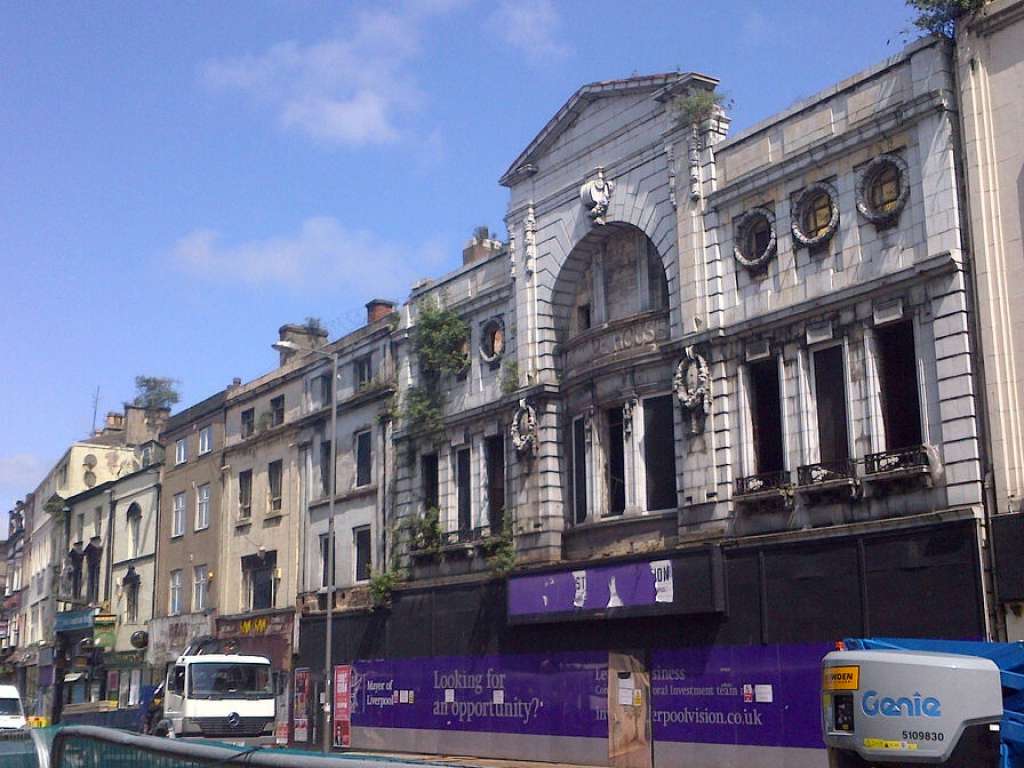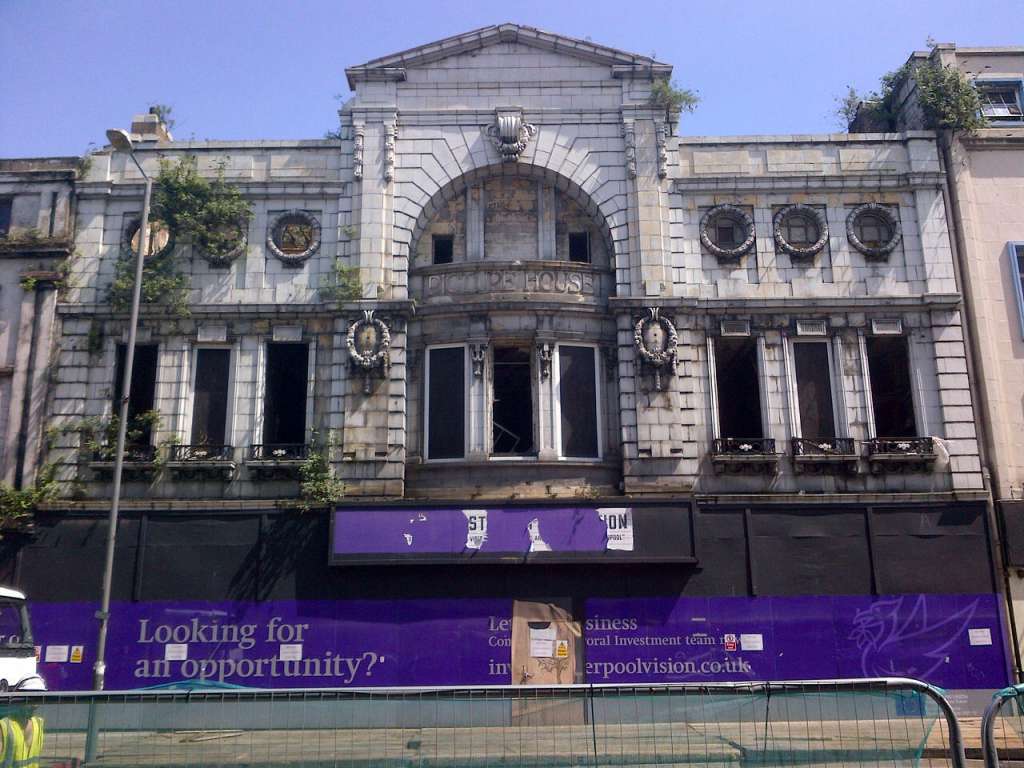SAVE agrees immediate conservation works to Liverpool’s Futurist
SAVE Britain’s Heritage has agreed conservation works to remove the pediment on the façade of the Futurist on Lime Street, following an emergency site visit and talks with the Council.
SAVE sent structural engineer and historic buildings expert Ed Morton of The Morton Partnership to Liverpool yesterday to try to reach an emergency agreement over how to stabilise the frontage of the 1912 former cinema.
During the talks, the Council agreed to only take down the minimum amount of the pediment necessary, and the wall head will be protected once deconstruction is completed. The blocks of the pediment will be taken down by hand, numbered and stored with a view to re-use should SAVE win the wider appeal over the proposed redevelopment of Lime Street which is due to be heard in June.
No deconstruction of other parts of the façade was agreed. The works are now expected to take place over the today and tomorrow.
The pediment (the triangle of masonry at roof level of the frontage) has previously been identified as vulnerable to instability, and Ed Morton has put forward an alternative stabilisation scheme using scaffolding which would not require any deconstruction, or a road closure. The Council has not been able to agree to this strategy.
Following an Appeal Court hearing yesterday morning in London, Lord Justice Lindblom urged SAVE and Liverpool City Council to reach an agreed approach for the historic cinema frontage. Both sides undertook to cooperate to agree a way forward.
The hearing was brought by SAVE following an announcement by the Council on Friday 20th May that they would begin deconstructing elements of the façade to a method not agreed by Ed Morton.
The Council had proposed dismantling the pediment and parapets of the building using workmen operating from small cherry picker. We were concerned that safe removal of the blocks using this method was not achievable, and that it could jeopardise the stability of the remaining parts of the façade, and surrounding buildings.
At the site meeting with Ed Morton yesterday, the Council agreed to use a larger cherry picker with a longer boom which will enable work on both sides of the pediment safely.
Henrietta Billings, Director of SAVE said: “We are keen to work co-operatively with the Council and so asked Ed Morton to go immediately to Liverpool following the Court hearing yesterday. We are pleased that a method for the safe and careful deconstruction the pediment of the frontage has been set out – and we look forward to continuing dialogue and talks with the Council over any future works.”
The substantive hearing for the wider appeal for the Lime Street development is expected to be heard on 22nd June.
Note to Editors:
1. Planning permission for the demolition of the Futurist cinema and over 10 flanking 18th and 19th century buildings on Lime Street was approved by Liverpool City Council in 2015 and SAVE has challenged the decision on heritage grounds. Numerous objections have been raised against the £35m proposal for student flats, from Merseyside Civic Society, the Historic Cinema Theatres Association and the Victorian Society, as well as SAVE. A public petition to Save the Futurist Cinema gathered over 4,000 signatures.
2. SAVE is continuing to appeal for funds to support the campaign. We need £10,000 to cover our legal costs and so far we have had over 130 separate donations and have raised nearly £6,000. Please help us reach our target by donating here: http://campaign.justgiving.com/charity/savebritainsheritage/limestreet
3. The appeal relates to Liverpool City Council (‘LCC’) and Neptune Developments’ proposals to demolish more than ten buildings on Liverpool Lime Street, which is located in the World Heritage Site Buffer Zone. The UK and its Overseas Territories’ 29World Heritage Sites are the ultimate responsibility of the Department for Culture, Media and Sport and John Whittingdale is Secretary of State for Culture, Media and Sport.
4. SAVE considers that insufficient consultation took place before the Council determined the future of Liverpool’s gateway street from which the famous railway station takes its name.
5. SAVE also considers that the issue of how LCC consults with the UK’s World Heritage Committee and DCMS is crucial in order to protect Liverpool’s World Heritage Site in the future. This also has wider importance for other World Heritage Sites in England and Wales. The current system of consultation is not clear and is not achieving the necessary level of protection.


